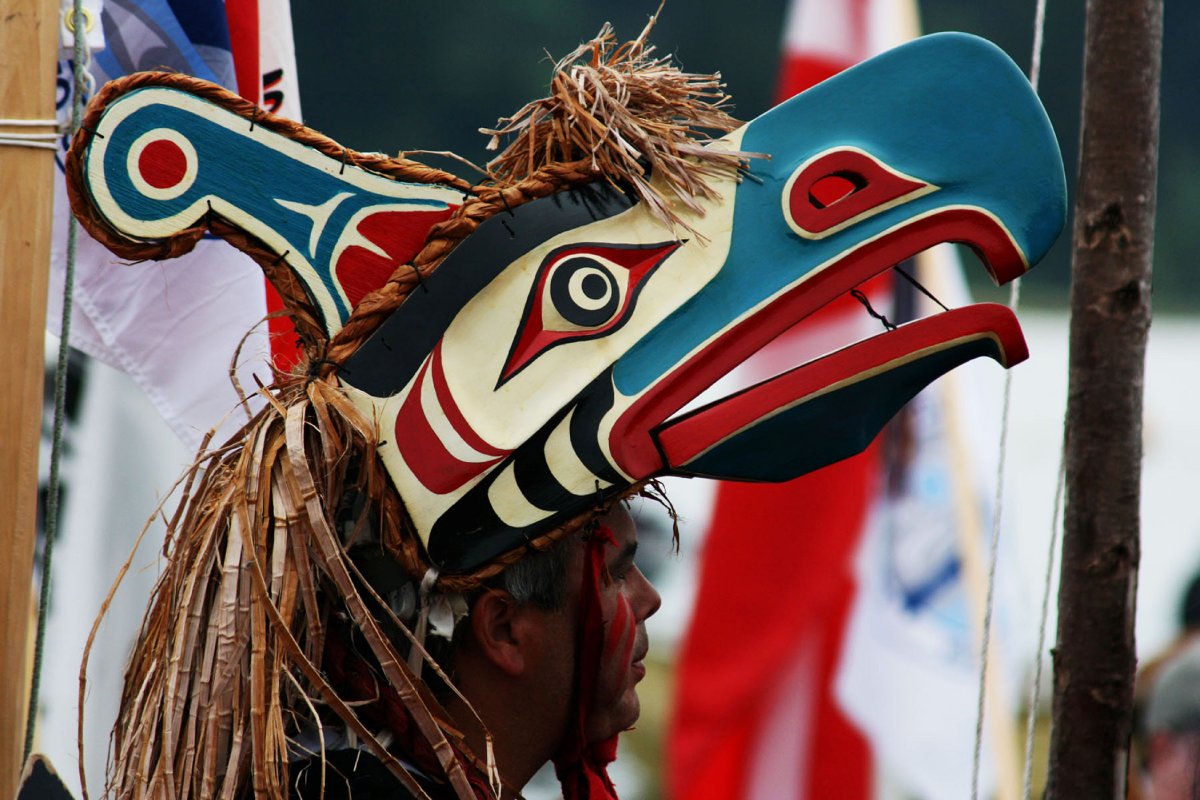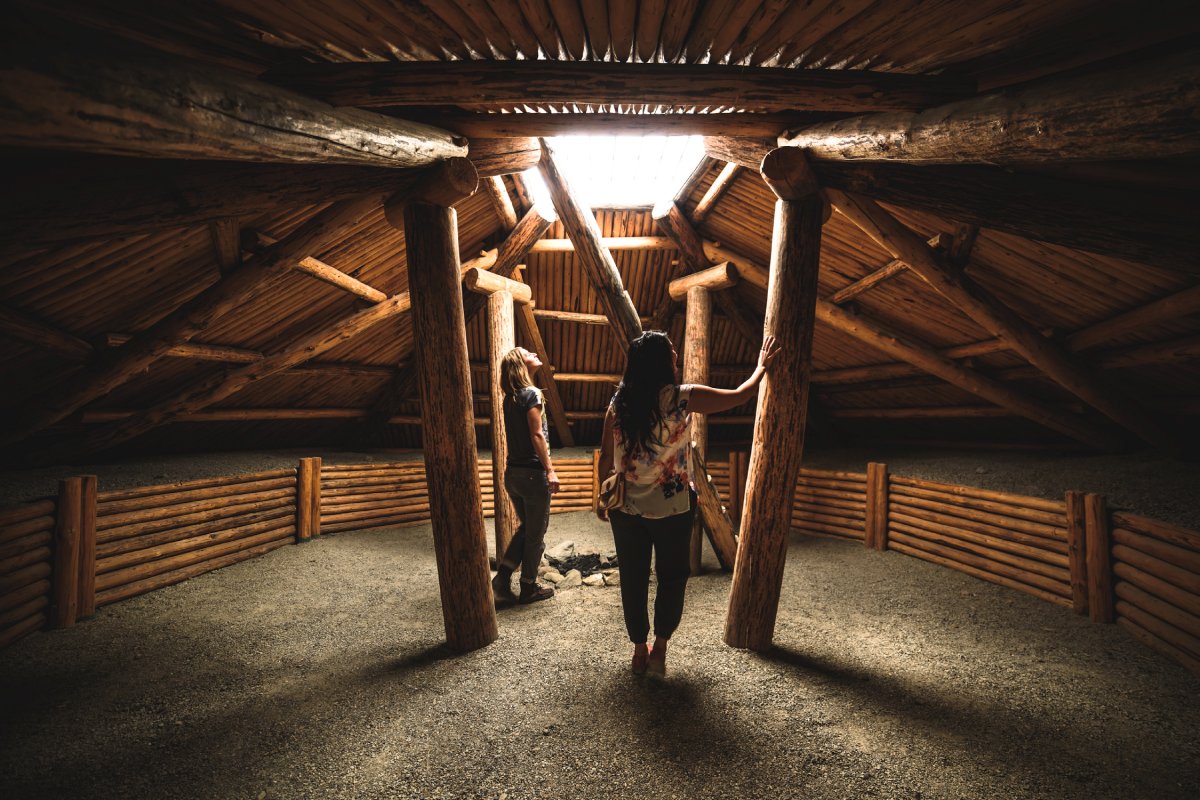There’s something special about visiting a place and spending time with local people who have deep knowledge of the region’s history and culture. In British Columbia, no one is more connected to the past, present and future of the land and all it has to offer than the First Nations. B.C. is home to more than 200 nations, all with their own traditions and practices, and many of them are now welcoming visitors and offering one-of-a-kind cultural opportunities.

“In British Columbia, we are blessed with remarkable natural beauty and wild experiences, but what really makes us a unique place to visit is our culture, and a big part of our culture comes from our First Nations,” says Janice Fraser of Destination BC. “More and more local First Nations are finding ways to tell their story to visitors and British Columbians through the experiences they offer. It’s a really exciting time to make those connections and seek out those experiences.”
Today, there are more than 200 Aboriginal tourism businesses in BC, an 85 per cent increase over 2006. Companies offer experiences including cultural centres, wildlife tours, resorts and wineries. Paula Amos, manager of regional initiatives and communications for Aboriginal Tourism BC, says the industry is still in its infancy and exponential growth is expected in the coming years as indigenous communities becoming increasingly aware of the benefits of tourism and visitors continue to invest in enriching experiences.
“People are looking for that deeper, richer experience and they will find it through aboriginal tourism in British Columbia,” says Amos. “We’re seeing our cultures being revitalized and shared. One of the greatest spinoffs of the aboriginal tourism industry is a better understanding of our cultures and with understanding comes respect.”
No matter what area of the province you’re hoping to visit, authentic aboriginal adventures await. Here are some ideas to get your trip planning started.
Cariboo Chilcotin Coast
From the Great Bear Rainforest to the mighty Fraser River, this region of British Columbia is home to diverse communities dispersed over the vast landscape. It’s also home to the elusive spirit bear, or Kermode, the rare black bear with a white coat. The Spirit Bear Lodge, located in the remote fishing village of Klemtu in the heart of the Great Bear Rainforest, offers spectacular bear viewing tours and accommodations in a cosy lodge that features Indigenous art and design. Culturally authentic accommodations can also be found in the Xatśūll Heritage Village in Williams Lake. Here you can stay in a teepee or pit house, experience a sweat lodge and learn about the history of the Xatśūll, the northernmost tribe of the Secwepemc Nation.
Kootenay Rockies
Popular among outdoor enthusiasts, the Kootenay region also offers some rich cultural opportunities. After a day of wilderness adventure, you can relax at the Ainsworth Hot Springs Resort, which has been a healing place for the Ktunaxa people for millennia. Soak in the restorative mineral baths, sample the bannock bruschetta at the Ktunaxa Grill and stay in a suite with views of Kootenay Lake and the Purcell Mountains. St. Eugene Golf Resort and Casino offers a different experience, bringing together aboriginal and Western culture. The main part of the hotel was once the Kootenay Indian Residential School, and today the resort features a cultural interpretive centre, a world-class golf course and stylish accommodation and dining. “They’ve taken a dark part of our history and made it into a beautiful, 4.5-star resort,” Amos says.
Thompson Okanagan
The Osoyoos Indian Band is a leader in aboriginal tourism and offers a number of opportunities in this semi-arid desert region, including the Nk’Mip Desert Cultural Centre, Spring Ridge at Nk’Mip Resort and the Nk’Mip Cellars, the first aboriginal-owned winery in North America. If you enjoy wine tours, you’ll also want to stop by the Indigenous World Winery, which opened last year. Another resort experience can be found at the Quaaout Lodge and Spa at Talking Rock Golf Course on Little Shuswap Lake. While the beautiful golf course has long been the draw, recently the community has added a number of aboriginal activities to entice families, including canoeing, drum making and storytelling.
Northern British Columbia
“Haida Gwaii is always a location that’s on a lot of people’s bucket list,” Amos says of the archipelago on the north coast of British Columbia. A big draw is Gwaii Haanas National Park Reserve and Haida Heritage Site, which is home to ancient abandoned Haida villages. Haida Style Expeditions offers cultural tours though Gwaii Haanas and beyond, complete with storytelling and traditional feasts. Back on mainland B.C., a number of museums help visitors understand the history of people and place: the Museum of Northern BC in Prince Rupert, the ‘Ksan Historical Village and Museum in Hazelton and the Nisga’a Museum in the Nass River valley.
Vancouver Coast and Mountains
Invite friends and family to join you at the Bill Reid Gallery of Northwest Coast Art and then treat them to some fabulous First Nations fare at the Salmon n’ Bannock Bistro, the city’s only aboriginal eatery. Planning a visit to Whistler? Make sure you stop at the Squamish Lil’wat Cultural Centre, which invites all ages for museum tours, singing and drumming performances, multimedia presentations, craft workshops and indigenous cuisine.
Vancouver Island
“Vancouver Island has a wide variety of aboriginal experiences,” Amos says. “Right now, the north island is bubbling with new developments.” In Port Hardy, the Kwa’lilas Hotel recently opened and is now the only four-star hotel in the area. Designed to look like a traditional big house with a smoke hole at the top of the structure, the oceanfront hotel is a peaceful place to take refuge after a day of exploring the north island. Also in Port Hardy, k’awat’si Tours offers many opportunities to immerse yourself in the culture, from drum making and cedar weaving to scenic boat and wildlife tours. Just off Vancouver Island in Alert Bay, you’ll find the U’mista Cultural Centre and its inspiring potlatch collection. The masks and regalia on display at the centre were all confiscated after an illegal potlatch in 1921 and brought home by the Kwakwaka’wakw people after a decades-long fight.









